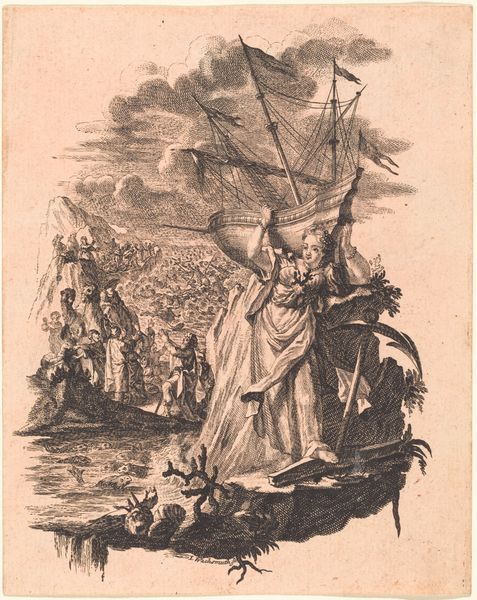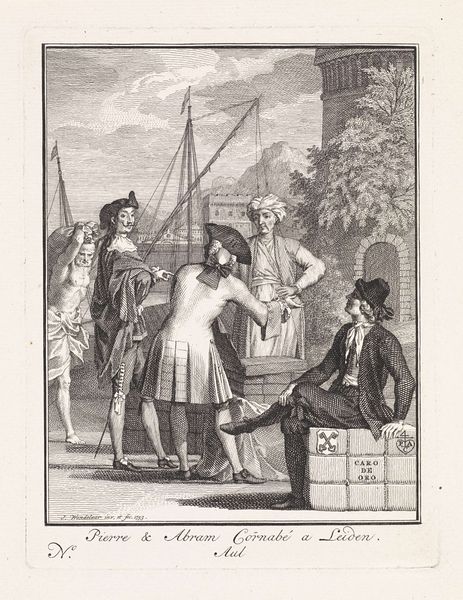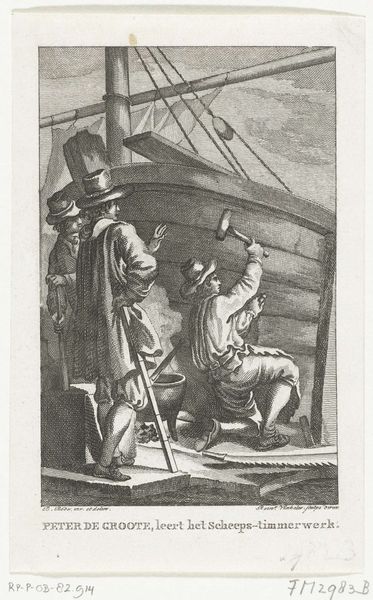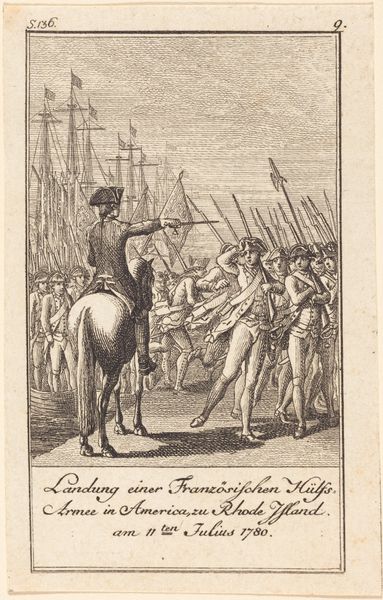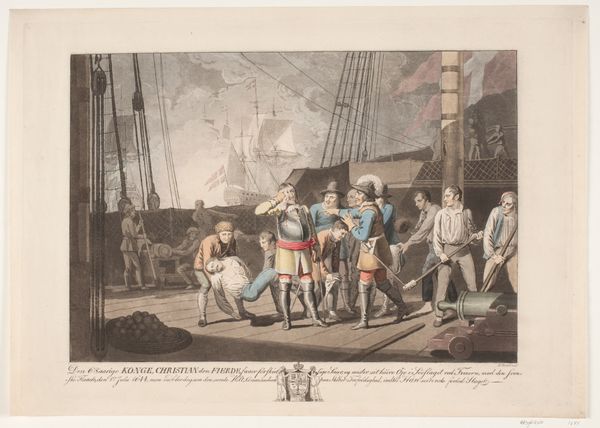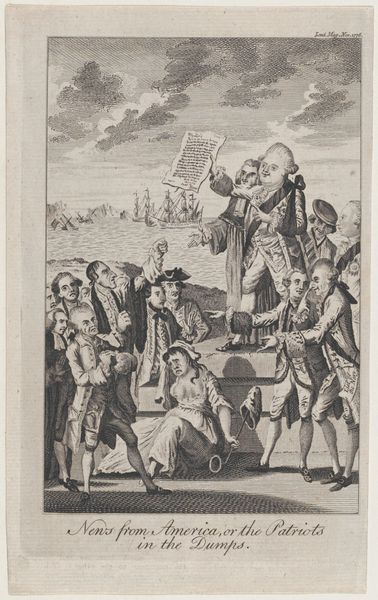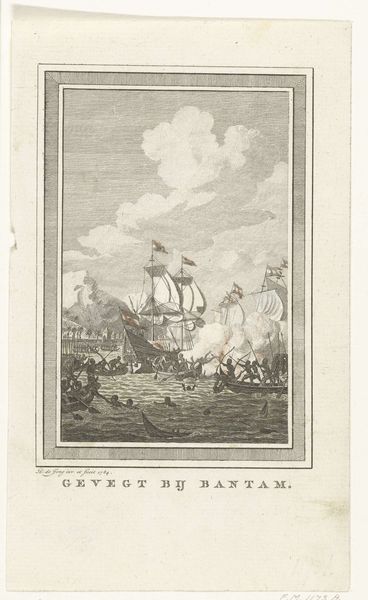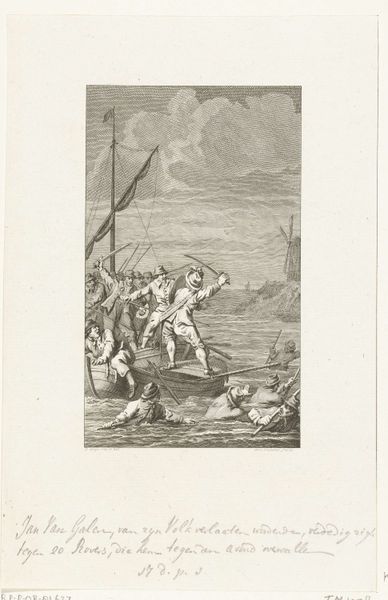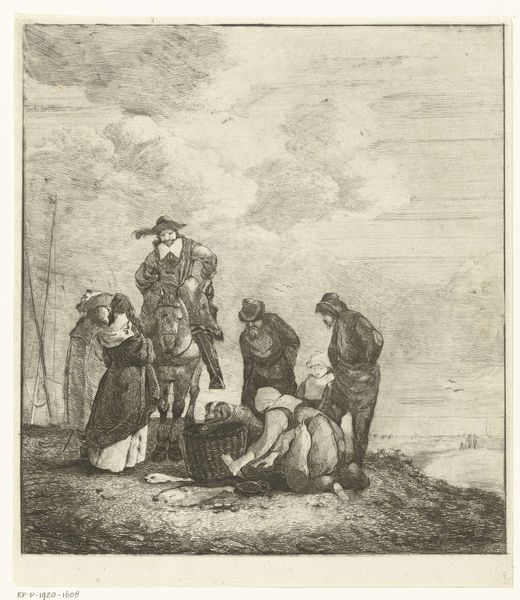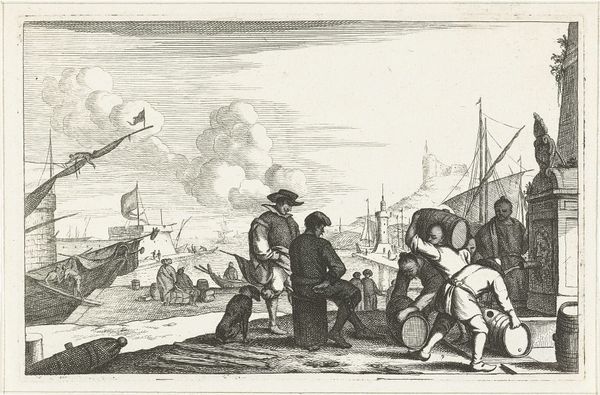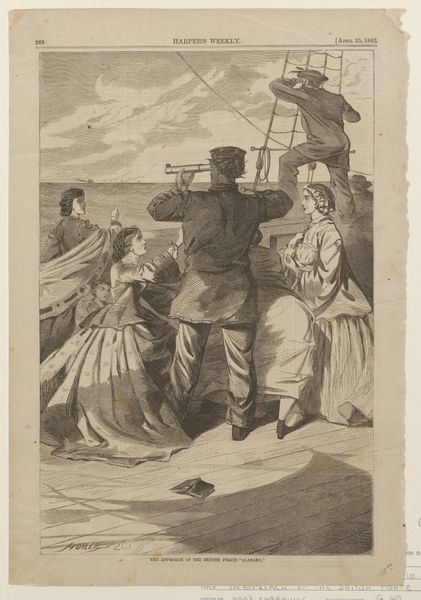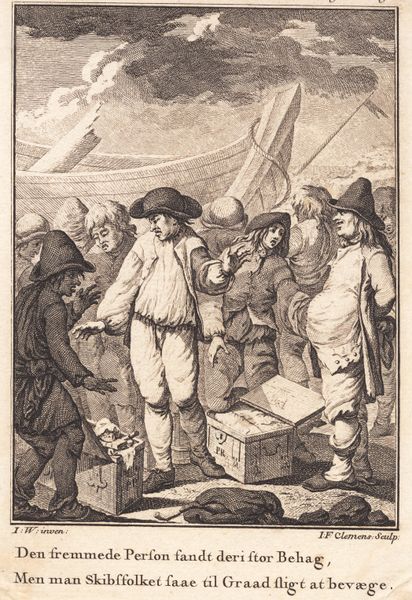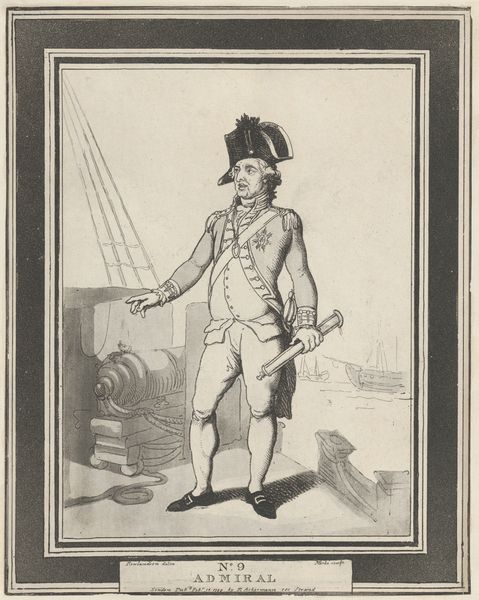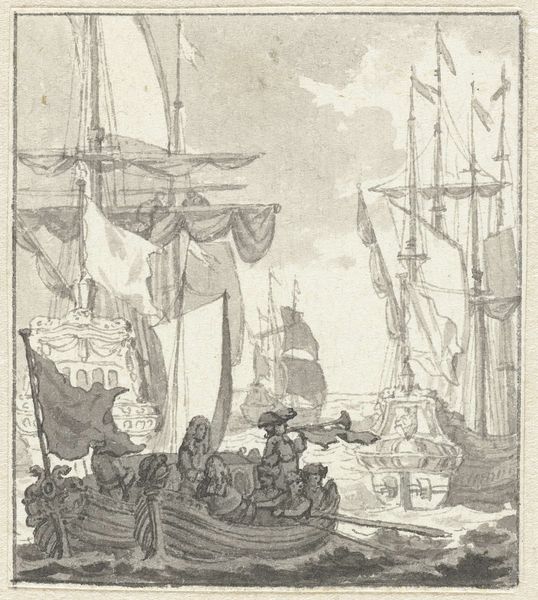
Dimensions: 176 mm (height) x 108 mm (width) (bladmaal)
Editor: This engraving from 1786 is titled "C. Cornelisen" and created by Georg Christian Schule. The figures look to be on a ship dock, and a man is seemingly being held or attacked by a group of people. What can you tell me about this work? Curator: This print provides us with a direct representation of labour. Note how the varying depths achieved through engraving communicate both form and a sort of material reality. Do you notice any patterns? Editor: Well, there's a clear hierarchy. The central European figure is the focus, seemingly struggling with other people surrounding him. Their bodies are much more cramped. Curator: Exactly! This highlights an uneven power dynamic inherent to production. An important detail lies in the fact that this is a *print*, one of potentially many, easily reproduced copies. This engraving makes visible a story involving colonial powers, using an easily disseminated and cheaply manufactured object. How might that affect its meaning? Editor: So the print itself is part of the story. Making this moment accessible on a wider scale emphasizes the colonial enterprise by depicting this moment of potential struggle. I suppose mass production changes the context, imbuing the artwork with meaning that would have been absent from painting or unique artworks. It shows that the meaning isn't *only* in the image, but is derived from the social reality of the creation, consumption, and global impacts of these historical actors and the object itself. Curator: Precisely! By emphasizing production, the image reveals its own embeddedness in broader networks of power, value, and exchange. Editor: I never considered how the medium itself could add another layer to its story. Thanks for sharing that insightful approach!
Comments
No comments
Be the first to comment and join the conversation on the ultimate creative platform.
